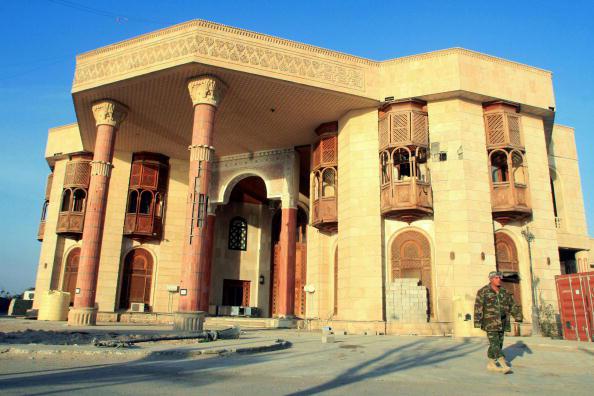Art World
Saddam Hussein’s Basra Palace Will Reopen as a Museum
Amid ISIS destruction, the old port city gets a second lease on life.

Photo: Essam Al-Sudani/ AFP/Getty Images
Amid ISIS destruction, the old port city gets a second lease on life.

Hili Perlson

This fall, Iraq will see the opening of a new museum in one of the former lavish mansions once owned by ousted dictator Saddam Hussein. The Basra palace of the executed Iraqi president is slated to open to the public in September, and will become the first museum to open in the conflict-ridden country since the 2003 occupation, National Geographic reports.
The project is the brain child of Qahtan al-Abeed, director of Iraq’s State Board of Antiquities and Heritage for Basra, who has had his eyes set on the mansion since 2008, when Hussein was captured by US forces, and the British Army—who occupied the Basra palace—left. For the following two years, al Abeed petitioned the central government to hand over the palace to the Board of Antiquities. In 2010, his wish was granted, the Observer reports.
In addition, the Basra government has allocated $3 million for the $3.5 million project—although the fund hasn’t yet materealized. The remaining funds came from a UK charity collecting donations from mainly oil companies. Meanwhile, the British Museum has offered pro-bono curatorial support.
Despite the devastation strewn by ISIS, the city of Basra—the country’s second largest and fastest growing urban center—is experiencing an economic revival thanks to relative political stability and a growing oil business in the surrounding area. With the new public museum, local politicians hope for a cultural revival in the ancient port city, too.
Founded in AD 636, Basra was an important trade center, and today houses one of the largest and least explored archeological sites in the world. What’s more, its port became famous through the storied adventures of Sinbad the Sailor.
“We want a very modern museum that does more than display objects,” al-Abeed told National Geographic. “We want to bring in people for all kinds of art and cultural activities, including training courses and professional meetings.” He plans to exhibit artifacts from the ancient civilizations of Sumer, Babylon, and Assyria, along with Islamic art, with many objects culled from Baghdad’s Iraq Museum.
The palace’s building, which still bears Hussein’s name above its main doors in elaborately carved wood, has suffered some damage from several car bombing from the time it served as a British Army mess hall. As part of the renovation work, al-Abeed plans to reinforce the doors with steel to combat looting.
But the museum is only the beginning. “We want to make this a heritage area with hotels and restaurants and a heritage museum, but being sure that people still live here,” al-Abeed told National Geographic. “We want to make this like Granada in Spain, but this is a 15-to 20-year project.” He’s also petitioning to list the area as a World Heritage site under UNESCO.